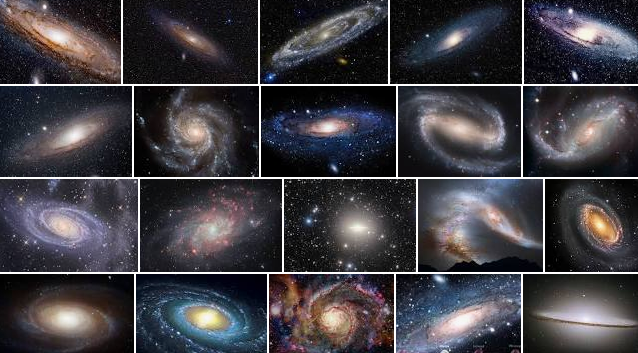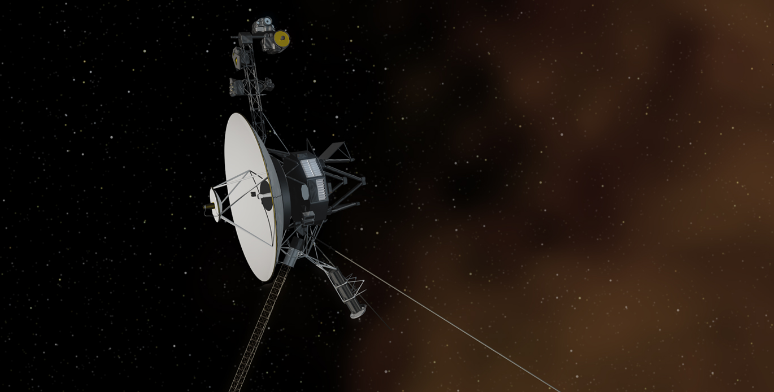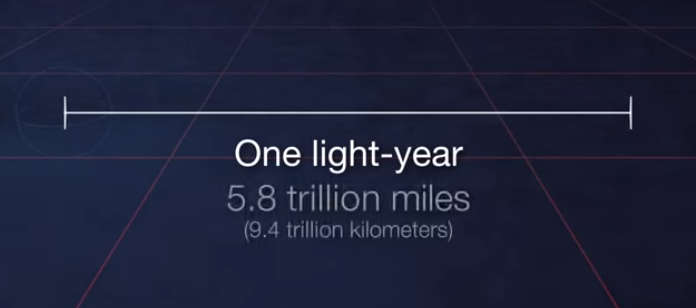Astronomers couldn't know how many stars are there in each galaxy till the present day.
At night, we see numerous stars in the sky but the nearest star in the daytime is our Sun. All the stars we see at night are just like our Sun. Some of them are bigger than the Sun, some are equal and some are smaller. All these stars are so far away from our Sun that we can't send any robotic mission to any of the stars. It seems impossible in the near future but we might be able some time to do so.
Our Sun is the nearest star. Its light reaches us in 8 minutes and 21 seconds traveling 15 crore kilometers distance and that's why we see 8 minutes and 21 seconds old Sun. We can't see the Sun until its light doesn't reach us. How far away are the observable stars? One of the nearest stars after the Sun is 4.5 light years away from us. Now, one can imagine the vastness of the universe. The stars we see in the sky at night are a small portion of the stars present in the sky.
There are approximately 2,000,000,000,000 (two trillion) galaxies but astronomers don't know how many stars there are in each galaxy as most of the galaxies are at a huge distance. But we can estimate the number of stars in the Milky Way in a reliable way. Stars are of different sizes and colors. Our Sun is a white-hot star of average size and weight. The temperature of its core is 15 million degrees Celsius. The color of the big and hot stars is blue like Vega in the Milky Way. It is the brightest star in the northern constellation of Lyra, located at 25 light years of distance from the Earth. The color of the small, light, and faint stars is red like Proxima Centauri. It is a small, low-mass star in the southern constellation which is 4.2465 light years away from the Sun.
Besides the Sun, the nearest red, white, and blue stars give light in different amounts. With the light measurement of a star, especially its color, and blaze, astronomers can estimate the number of stars in our galaxy. They have estimated that there are about 100 billion stars in the Milky Way. There are about 200 billion trillion stars in the universe. This number is so huge that it is difficult to imagine.
The James Webb Space Telescope has seen the farthest galaxy that came into being within about 325 million years of the Big Bang. This telescope has seen a lot of galaxies that seem exceptionally away from us. Astronomers measure the distance among the celestial bodies by using a redshift meter.
Voyager-1 and 2 were launched in 1977 for universal research. The experts are trying to shut down some of their systems to save energy. Despite closing their heaters in the previous three years, both voyagers are continuously working below the temperature at which they had been tested. It is a miracle of sophisticated engineering that both voyagers are still there even after half a century. It is unbelievable that both voyagers are run by radioactive plutonium reactors which continuously provide electricity to the tiny computers on board that are running for decades without any pause.
The purpose of these missions was to get information and send pictures of Saturn and Jupiter and their moons. The Voyager-1 took a picture of the Earth at a distance of 3.7 billion miles from the Sun in which the Earth looks like a tiny blue dot. They are now more than 10 billion miles away from home, where our Sun looks like any other bright star. The pair are still doing science.
The cosmic distances are measured in light years. The light travels a distance of 3 lacs kilometers in a single second. There are 86400 seconds in a day. Light travels 25 billion and 92 crore kilometers in a single day. The distance that is traveled by light in a year is called a light year. We can't measure the distance between the stars and outside the solar systems with kilometers and miles. For instance, the star Alpha Centauri (a triple star system in the southern constellation of Centaurus) is located at a distance of 4.25 light years. Imagine how massive this distance is? A spacecraft traveling at a speed of 60000 kilometers per hour will reach Alpha Centauri Star in 76000 years without any pause.
Remember that Voyager Spacecraft is traveling at the same speed towards our neighboring star. It has traveled for 46 years since its flight from the Earth. In these 46 years, it has gone more than 26 billion kilometers away from us.








